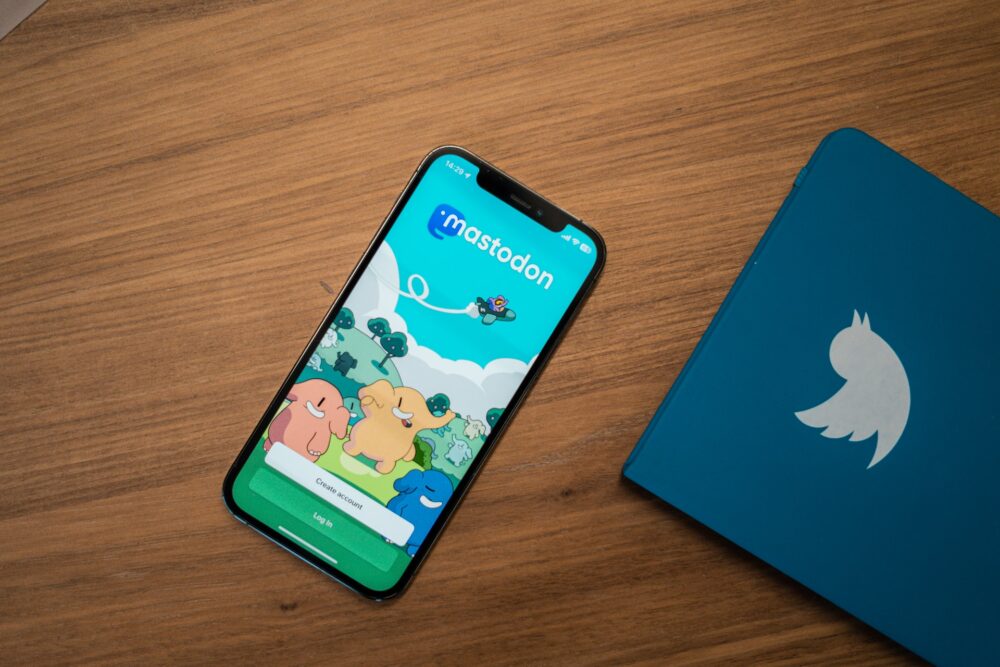In light of the recent media face-off, Martina Šíp Vlková, social media specialist for Applifting assesses whether Mastodon poses a threat to Twitter.
Elon Musk woke up the beast that is Mastodon. The decentralised social network is the new hype for people who are fed up with Elon’s leadership of Twitter. Mastodon was founded in 2016 by Eugen Rochko, but it’s now gaining major popularity mainly thanks to Elon Musk’s behaviour in recent days. Why are users attracted to it? Let’s take a look at a comparison of these two social networks.
At first glance, it looks the same as Twitter. There is a feed of posts, which are lined up one below the other. But instead of tweets, there are toots, which can be significantly longer—you have 5,000 characters at your disposal. Another feature users will be familiar with is boosting, which is the same as retweeting on Twitter. And finally, in order to like a post on Mastodon, you use the asterisk.
Communities over ads
The main difference between Mastodon and Twitter is that Mastodon is not owned by any corporation or even one person. It is an open-source decentralised network. That means that it brings together a lot of different instances that belong under one roof. Any user can be an administrator and create their own instance with their specific rules. In this sense, it’s more like Reddit or Discord, which put an emphasis on building diverse communities around certain interests. Also, the app is run by thousands of people. It’s non-profit and focused more on the community, therefore you won’t see any ads in your feed.
It all sounds great—until you decide to sign up
Unfortunately, it doesn’t go so smoothly. Here is why. During the sign-up process, you aren’t just simply signing up for Mastodon, but you have to pick an instance/server that matches your field of interest or location. The selection is mandatory for all new users. The creator of the network compares it to email. When you set up an email account, you have to decide which service you want to use—Gmail, Outlook, Yahoo—but it doesn’t mean that you can’t send a message from Outlook to someone who uses Gmail. Similarly, all the users can follow what’s happening on any server they like. Therefore, you can have more than one feed. You have a choice to see posts only from the people you follow, from everyone in your instance, or to browse news selected from the instances you are interested in.
It takes a while to get to grips with this new social network, but there are guides to help you. Once you are settled in the right community, it can be a very comforting place because it shows you the topics you are interested in, the people you chose to follow, and the kind of news you care about. Let’s keep in mind that this happy corner of the internet can be dangerous too, just like any other social media.
Will Mastodon beat Twitter?
I’m rather sceptical. I personally don’t think this network is for everybody. Compared to other social media, registration is not simple and intuitive, and it requires effort to navigate the whole process. There are over 237.8 million active users on Twitter; Mastodon has only 2.6 million so far, though that number is still growing. The situation regarding Elon Musk’s actions has created a hype that is quite possibly at its peak. We’ll see if new registrations continue to rise after the media attention dies down.
Summary overview
| Social network | Mastodon | |
| Type | Corporation in hands of one person—CEO
Profiting from ads and subscriptions |
Decentralised network, run by many people, who create instances.
Non-profit, no ads Community focused |
| Active users | 237.8 million | 2,648,379 users
and 9,770 instances |
| Post | Tweets – 280 characters | Toots – 5,000 characters |
| Feed | One
|
More
|
| Interaction | Like with a heart button | Favourite with an asterisk |
| Share message with other users | Retweet | Boost |
| Account verification | Paid | Free |


